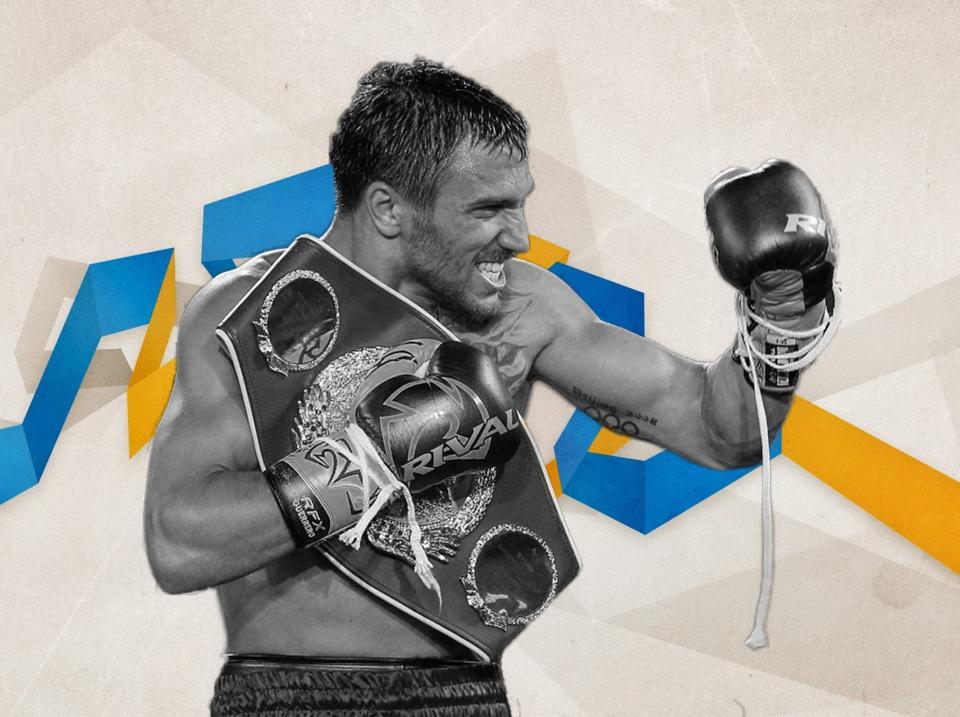Vasyl Lomachenko fights Jose Pedraza aiming to achieve in his 13th fight what some don’t in a lifetime

With the same elusive grace he uses to pirouette nimbly around his opponents, leaving them groping clumsily into the darkness like drunks on the dance floor, the great Vasyl Lomachenko has dropped off the news agenda in recent weeks, overshadowed by the exploits of two of his Ukrainian contemporaries.
In November, Oleksandr Usyk ascended to the heavyweight empyrean by pensioning off a valiant Tony Bellew, over eight thrilling rounds in Manchester. Last weekend, Oleksandr Gvozdyk won the WBC and lineal light-heavyweight titles from Adonis Stevenson, a tremendous achievement with tragic consequences. Now, it is Lomachenko’s turn to dart brilliantly back into the spotlight.
On Saturday night, Lomachenko will grace the Hulu Theatre in New York, a low-ceilinged crypt that lies underneath the famous Madison Square Garden, where the ghosts of so many celebrated moments in boxing’s rich history hang heavily in the air. And while the New York Knicks play the Brooklyn Nets upstairs, Lomachenko will fight Jose Pedraza down below, attempting to become a unified lightweight world champion in just his second outing in the division.
His most recent victory, a tenth-round stoppage of the hard-nosed Jorge Linares, saw him become a three-weight world champion in his twelfth professional fight. For context: it took Oscar De La Hoya 22 fights to achieve the same feat. Floyd Mayweather 34. The great Sugar Ray Leonard a comparatively plodding 35. Lomachenko’s numbers are as rapid as his sequences, as breathtakingly bamboozling as his movement.
Thrown into the ring with Linares, himself a celebrated world champion at three weight divisions, Lomachenko’s spiteful artistry scaled remarkable new heights. A combination he landed at dizzying speed in the second exemplified his talent: Lomachenko exploited Linares’ high guard by ripping a pair of boomerang hooks into his taut body, following up with a right uppercut which crashed precisely through the half-inch left exposed underneath his chin.
The tone was set for a wonderful fight. Linares maintaining a wisely wide stance, hanging back, looking to counter. Lomachenko twitching, feinting, spinning and punching, punching, punching. He is boxing’s biggest glutton: why throw just the one shot when you can throw five, pivot around your opponent’s contorted body like a dancer auditioning for the Ballet de l'Opéra de Paris, and throw five more?
But Lomachenko did not have it all his own way. Later in that second round he felt his right shoulder pop out of place before clicking uneasily back in. Unknowingly, he had torn the labrum, an excruciating injury which he bravely disguised for the remainder of the fight. “I couldn't use my right arm to throw my right hook, and it was very uncomfortable to continue my fight,” he smiled through gritted teeth, following an examination by an orthopaedic surgeon shortly afterwards.
And, in the sixth, his unstinting confidence briefly toppled over into arrogance. Marching blithely down the middle like an indignant opening batsman come to prod inquisitively at the pitch, he caught a straight right hand that rattled his incisors and sat him down on the canvas. Staring up at the referee in disbelief, the very real dangers of the prize ring suddenly floated back to the surface. He would battle back to win in the eighth, with a sickening shot to the liver. It had been no procession.
This is what makes Lomachenko such a spellbindingly thrilling fighter to watch, particularly at 135 pounds. His greatness is compellingly entwined with the potential for his own destruction. In search of an equal, he finds himself tempted into fights with bigger men: his next opponent, Pedraza, is taller, heavier, with a not insignificant 5” reach advantage. With every fight comes increased risk.
What Lomachenko lacks in size and stature, he makes up for in his dizzying array of lateral movement. And to be sat, mouth agog, focused only on Lomachenko’s blurring and brutal hands is to criminally miss what makes him the most compelling currently active boxer. He might not possess the explosive in-and-out movement of Manny Pacquiao. Or the slick glide of Pernell Whitaker. Or the exuberant pounce of Prince Naseem. Instead he possesses a cocktail of all three.

There is no boxer better at sidestepping his opponent having witnessed an angle that nobody else can see; at planting his front foot tendril-like on the outside of his victim so that he can counter from off-centre, as vital to a southpaw as a left hand itself. Rivals don’t watch Lomachenko. They spot him darting in and out of their peripheral vision, flickering like a bad television reception, constantly disappearing and reemerging like a shadow in soft dappled sunlight.
Many have been unable to take it. Most boxers go through their entire careers without experiencing a rival surrender: four of Lomachenko’s last five opponents decided there was no point in continuing. They — or their corners — quit not through capitulation, but fear: the fear of the next nanosecond he slips alarmingly out of eyesight, the fear of that rush of air somewhere to the side of them, the fear of the blow they cannot see. Lomachenko is simply not worth the risk.
Pedraza, the WBO champion who insists he has studied tapes of the fight with Linares so often he has uncovered the secrets to Lomachenko’s downfall through sheer bogeyed repetition, is the latest man to stand Sisyphus-like in his path. He is a 12/1 underdog. Beyond poor Pedraza stands Mikey Garcia, the sole remaining lightweight title holder, before a crack at a fourth weight division.

 Yahoo Sport
Yahoo Sport 



































































